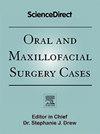舌下神经刺激术中伤口并发症的处理:避免器械外植的预防策略和标准
Q3 Dentistry
引用次数: 0
摘要
舌下神经刺激术是治疗阻塞性睡眠呼吸暂停的一种行之有效的方法,但其侵入性引起了人们对伤口并发症的担忧。本系列病例研究了三种不同的术后情况:(1)血糖控制不佳和自我护理不足的患者早期感染,(2)长期不使用装置的患者晚期感染,以及(3)因不遵守术后限制而导致的早期伤口开裂,该患者通过新颖的伤口管理方案成功保住了装置。这些病例凸显了全面风险评估、遵守术后指导原则、控制代谢性疾病和个体化管理策略对于在降低医疗成本的同时保持设备功能的重要性。值得注意的是,这是第一份在伤口开裂的情况下仍能成功保留舌下神经刺激装置的报告。进一步的研究对于完善风险分层和建立循证治疗方案至关重要,这种创新疗法的使用率越来越高。本文章由计算机程序翻译,如有差异,请以英文原文为准。
Managing wound complications in hypoglossal nerve stimulation: Prevention strategies and criteria for avoiding device explantation
Hypoglossal nerve stimulation is a proven treatment for obstructive sleep apnea, yet its invasive nature raises concerns about wound complications. This case series examines three distinct postoperative scenarios: (1) early infection in a patient with poor glycemic control and inadequate self-care, (2) late-stage infection in a patient with prolonged device non-use, and (3) early wound dehiscence caused by nonadherence to postoperative restrictions, successfully managed with a novel wound management protocol that preserved the device. These cases highlight the importance of comprehensive risk assessment, adherence to postoperative guidelines, the control of metabolic diseases and individualized management strategies to preserve device functionality while reducing healthcare costs. Notably, this is the first report demonstrating successful device retention in hypoglossal nerve stimulation despite wound dehiscence. Further studies are essential to refine risk stratification and establish evidence-based treatment protocols for this innovative and increasingly utilized therapy.
求助全文
通过发布文献求助,成功后即可免费获取论文全文。
去求助
来源期刊

Oral and Maxillofacial Surgery Cases
Medicine-Otorhinolaryngology
CiteScore
0.60
自引率
0.00%
发文量
43
审稿时长
69 days
期刊介绍:
Oral and Maxillofacial Surgery Cases is a surgical journal dedicated to publishing case reports and case series only which must be original, educational, rare conditions or findings, or clinically interesting to an international audience of surgeons and clinicians. Case series can be prospective or retrospective and examine the outcomes of management or mechanisms in more than one patient. Case reports may include new or modified methodology and treatment, uncommon findings, and mechanisms. All case reports and case series will be peer reviewed for acceptance for publication in the Journal.
 求助内容:
求助内容: 应助结果提醒方式:
应助结果提醒方式:


